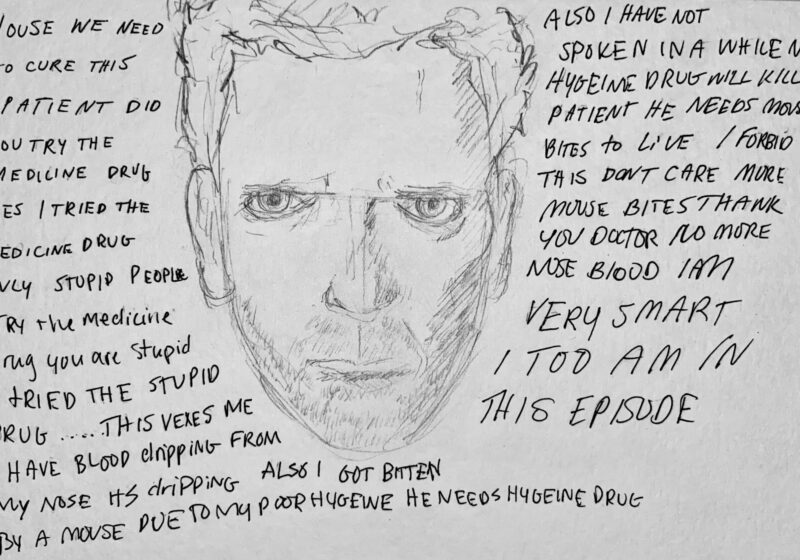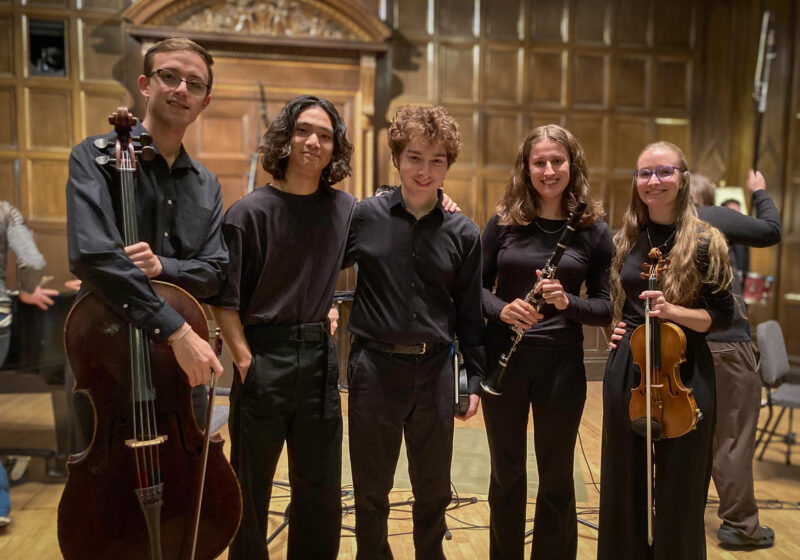Under rain and dreary skies, Professor of Biology Robert Minckley’s Ecosystem Conservation and Human Society class trudged through UR’s Woodlands near Whipple Park in Brighton. Teaching Assistant and sophomore Margaret Ball gave instructions to the students from the front of the line, asking them to consider the function of each individual part of the woodlands as a part of the class assignment to measure the woodlands’ dollar worth.
Part of UR’s master plan involves an extension south into this very spot the Whipple Park area. UR, under the leadership of Chief Financial Officer Ronald Paprocki and Director of Facilities Richard Pifer, is exploring options for housing, research and renovations to existing buildings in the woodlands area.
The woodlands may be threatened by development.
The area contains various plant and animal species that are rare within upstate New York. The fact that the woodlands play host to many stages of natural growth increases overall diversity some of the land can be categorized as mature woodlands, which occur on sites that were never converted to agriculture and are over 150 years old. The area includes over 90 bird species and 40 tree and scrub species, several of which (American chestnut, Freeman’s maple, black cherry) are quite rare in upstate New York.
Vernal pools wet shallow depressions provide breeding sites for amphibians. There are a large variety of animal species as well. Drainage, recreation and carbon sequestration are examples of ecosystems the Woodlands provide.
Students and classes currently use the woodlands as lab space, such as to evaluate ecosystem services that is, quantifying what the woodlands provide for humans and determining the costs and benefits of converting it.
According to Professor of Biology Tara Ramsey, the area’s proximity to the River Campus increases its utility.
‘It’s close by we take classes there,” she said.
About 14 undergraduates have independent projects in the area as well.
Ball, who completed an independent study in the area, now uses the space for research.
‘The value of it is tremendous because there is no other opportunity for students to see a natural area like that and study it,” Ball said. ‘And it’s so close to campus. There’s nothing else like it… I think it’s a great resource for the University.”
Minckley had students value ecosystem services for the woodlands, such as the wetlands’ role in cleaning water.
‘Some people were really blown away that there was a big old forest so close to campus,” he said. ‘There’s a little more traction when you actually see the place. It shows [students] the complexity of [valuation].”
Current concerns
Despite being far from the city’s center, people frequently enter the woodlands for potentially harmful activities.
Human interference raises other concerns, particularly for liability.
‘If people are doing stuff in there and get hurt, the University could be sued,” Ramsey said.
The biology department has proposed to put up signs and trail maps. Many trails already exist in the area the issue is codifying trails that the University wants people to use to incur minimal environmental damage.
‘We want to get people on individual paths rather than wander aimlessly,” Ramsey explained.
Invasive species, as well, damage the woodlands’ ecological health. Oriental bittersweet, honeysuckle, buckthorn and garlic mustard all comprise threats.
With development, the area can be better maintained by the University, and the spread of invasive species can be curtailed. The goal is not only to make the area accessible to people, but also to protect the natural ecosystem.
‘It should be possible to make it so that people can go and have a good time and use it while also protecting it in the long term,” Ramsey said. ‘The worst thing that can happen is that they tear it down and put a building that would be worse from a sense of preservation. It would be better to have it be used more by people in an appropriate way than be lost entirely.”
There are other concerns in addition to the environmental ones water drainage from the wetlands could be a major issue for nearby Brighton residents.
‘The woodlands on the South Campus probably play a pretty big role in buffering water,” Ramsey said. ‘And I think this will actually be a big issue in getting any more buildings…if it was altered, it could lead to that water going elsewhere including places that people don’t want it to go, like their backyards.”
The Town of Brighton conducted its own master plan a few years ago to rezone UR’s land on South Campus into an Institutional Planned Development Zone. The University has attempted to allay Brighton’s concerns by building for residential purposes near private properties and leaving buffer zones between it and Brighton. The administration believes that its plan is viable for both Rochester and Brighton, according to Pifer.
‘Now it’s completing the administrative process to get final approval for both of the rezoning efforts,” Pifer said.
The University’s rezoning has already been approved by the State Environment Quality Review Board.
‘The town has to issue a negative declaration that is a statement declaring the University’s proposed development has no adverse effects,” Paprocki said.
This declaration will probably be made in the coming year. Then, when UR finalizes definite plans many years down the road, the plan will have to return to the Brighton Town Hall for approval.
Biologists’ consensus
Members of the Biology Department are in general agreement over plans for the woodlands.
‘What their concerns and interests are, are really compatible to what we have planned,” Paprocki said.
Biology Department Chair Tom Eickbush agreed.
‘It seems that everybody seems to be on more or less the same page,” Eickbush said. ‘It’s kind of a remarkable resource very close to campus and we need to preserve it.”
Ramsey saw several potential ways that preservation of the woodlands could be beneficial. Preservation of the area could even be used for advertising or for photos on the Web site to raise UR’s profile.
‘[The woodlands] could potentially be a focus for fund raising,” Ramsey said. ‘In the West, they’ll actually name a grove of trees or a path after the donor. In theory, you could do the same type of thing here.”
This is part two of a two part series. The first article can be found here: http://www.campustimes.org/migrating-south-1.2063572
Otis is a member of
the class of 2011.




